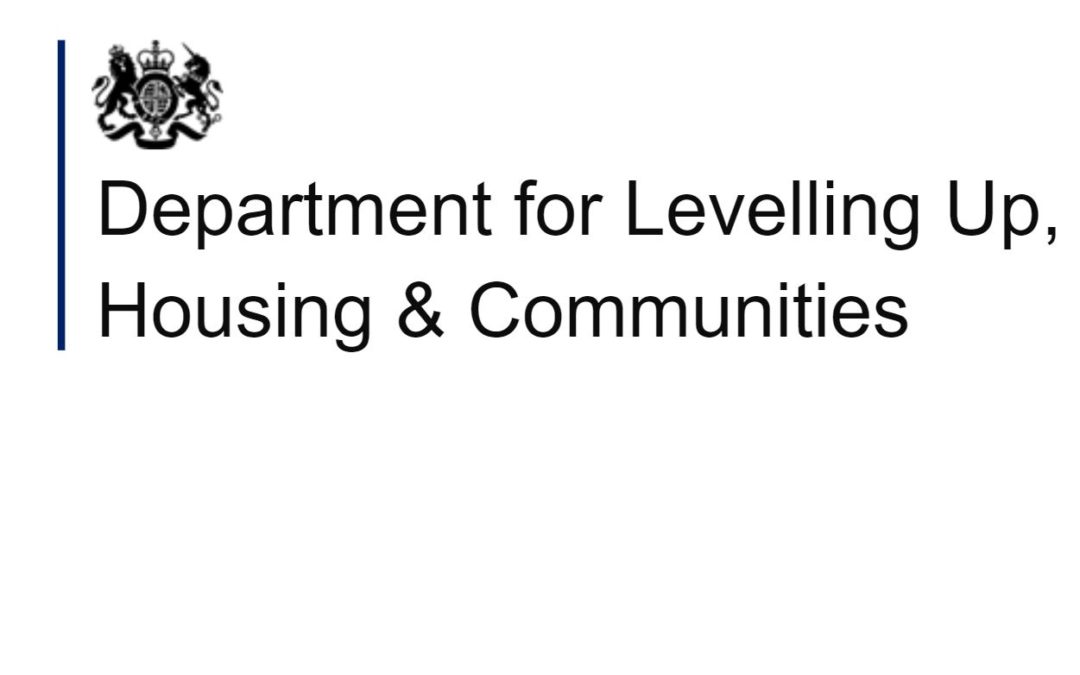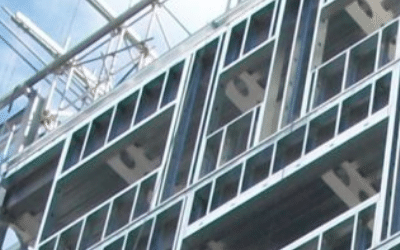Updated 11 January 2022 – changes to testing requirements – new flowchart issued by BuildUK.
The UK faces a new COVID challenge at the start of 2022 with evidence pointing to a highly transmissible, but thankfully less severe strain. With the highest level of cases the UK remains on a high state of alert with tactics being adopted across the the devolved nations focussed on stemming transmission, protecting the NHS and encouraging individuals to get booster jabs. Below is a quick summary of what the latest announcements mean for you:
In England
The key change for businesses related to the shift to Plan B is that the Government’s Working safely during coronavirus (COVID-19) have been updated to reflect that those who can, should work from home. If an individual cannot work from home then they should continue to go into work, and hence construction, retail and manufacturing sites should continue to operate. Maintaining a safe workplace is critical and members should continue to minimise the risk of transmission. The Site Operating Procedures remain available as a reference document and will be reviewed and updated if necessary (they have not been changed at this time).
The rules have changed regarding the required self-isolation period after testing positive for COVID-19 and Build UK has updated the COVID-19 flowchart to reflect the current position and you can find the latest version here (11.1.22).
In England, Wales and Northern Ireland an individual may test to release after 7 days, in Scotland 10 days remains the rule. The NHS rules on when to start counting and testing are summarised below.
| Day 0 |
Symptoms begin or test taken |
| Day 1 |
Begin counting self-isolation days |
| Day 2 |
Isolate |
| Day 3 |
Isolate |
| Day 4 |
Isolate |
| Day 5 |
Isolate |
| Day 6 |
Begin home testing – Continue to Isolate |
| Day 7 |
Self-isolation can end with two negative testes taken at least a day apart |
| Day 8 |
Self-isolation can end with two negative testes taken at least a day apart |
| Day 9 |
Self-isolation can end with two negative testes taken at least a day apart |
| Day 10 |
Isolation ends – no test required |
The caveat on returning to work on day 7 is if you still have a temperature you should remain in isolation for 10 days regardless of the lateral flow test results. In Wales and Northern Ireland the release at 7 days is dependent on your vaccination status.
The other big change in guidance relates to Face Coverings. The CLC guidance on The Use of Face Coverings in Construction has been updated to reflect changes in the guidance. Where workers on site are not required to wear RPE, face coverings should be worn if their workplace is crowded and enclosed (which may include welfare and changing facilities, site offices, site meeting rooms or site transport) and if they come into contact with others they do not normally meet (Mask fo Task – Cover for Covid signposting available here).
The Government has confirmed that the data will be kept under ‘constant review’ and following the regulations being implemented on 15 December, they are set to be reviewed after three weeks on Wednesday 5 January and expire after six weeks on Wednesday 26 January.
In Scotland
In Scotland individuals are again recommended to work from home where possible and guidance on use of face covering has been updated to enforce use on public transport and in most indoor places, including hospitality and whilst working in other people’s homes. On 17 December 2021, regulations were introduced to help combat transmission of the Omicron variant.
state that a person who is responsible for a place of worship, carrying on a business or providing a service must:
- have regard to this guidance about measures to minimise risk of exposure to coronavirus; and
- take such of these measures as are reasonably practicable to minimise the incidence and spread of coronavirus on the premises, for example measures which limit close face-to-face interaction, such as supporting working from home, making adjustments to the premises and putting in place protective measures such as signage, screens and other mitigations
New guidance also places clear emphasis on the need for vaccination/boosters and testing – see for example the section on working in other people’s homes, where the advice is for both the workers and householders to undertake an LFT.
People are being encouraged to take a lateral flow test before mixing with people from other households. The Scottish Government have recommended people think carefully about unnecessary contact with other people, especially in crowded places – suggesting it would be sensible to postpone work Christmas parties.
A reminder that the CICV Forum videos on wearing masks and working safely are available to use on your own social media channels and website. Click on the link to download them and help spread the health and safety message across the industry: https://we.tl/t-KOCJI7XDnD
CICV in Scotland has produced excellent guidance to cover site operating procedures in Scotland, this was updated on 24th November and whilst is under review, no immediate reaction has been recommended to deal with latest advice.
Isolation rules state that anyone contracting COVID is required to isolate for 10 days. If you are a close contact who lives with someone who has tested positive you should isolate for 10 days even if:
- you have had a negative PCR result
- you’re fully vaccinated – this means you’ve received 2 doses of an approved vaccine and have had your second dose more than 14 days ago
- you have tested positive for coronavirus in the last 90 days
- Household contacts you must always complete the 10-day self-isolation. This includes those under 18 years old. Some health and social care workers may be exempt.
Business and organisations providing vital public services can apply for an exemption to allow essential workers to volunteer to leave self-isolation and return to work, in certain limited circumstance, to allow vital services to continue. You must be able to demonstrate that staff shortages are in danger of putting essential functions and services at risk. You can end self-isolation if all of the following apply:
- you’re fully vaccinated – this means you’ve received 2 doses of an approved vaccine and have had your second dose more than 14 days ago
- you receive a negative PCR test result
- you do not have, or develop, symptoms
- If you’re a close contact (non-household) and you’ve tested positive for coronavirus in the last 90 days, you do not have to self-isolate or book a test if you’re fully vaccinated unless you develop new symptoms.
More on how to apply for an exemption here.
In Wales
Advice is consistent with England and the advice is that individuals should work from home wherever it is possible; and people must wear a face covering on public transport and in most indoor places, except hospitality.
The CLC guidance on The Use of Face Coverings in Construction and Site Operating Procedures stand.
In terms of self isolation in Wales, this is dependent on vaccination status. Anyone who is a close contact of a suspected Omicron case will be asked to isolate for ten days and take a PCR test on day two and day eight, regardless of their vaccination status or age.
In other cases, if in close contact and you are aged 18 and over, and not fully vaccinated, you must self-isolate from the day you were last in contact with the person who tested positive for COVID-19 and for the next 10 days. You should also take a PCR test on day 2 and day 8. It is important that you take the tests even if you feel well as you may have COVID-19 even if you do not have symptoms.
If you are a fully vaccinated adult, or a young person aged between 5 and 17, and you have not been identified as a close contact of a suspected or confirmed Omicron case, self-isolation and testing requirements will depend on whether someone in your household has symptoms or has tested positive. If you live or spend a significant amount of time in the same household as someone who has symptoms you should self-isolate and take a test as quickly as possible. If your test is negative you can stop isolating but you should remain vigilant for new symptoms. You should try to avoid contact with vulnerable family and friends in the short-term (for example elderly relatives or those who are higher risk of severe COVID-19 infection).
If the Omicron variant is suspected, you must isolate until it has been confirmed that the person who has tested positive does not have an Omicron variant. Once that happens Test, Trace, Protect service will contact you and advise on what to do next. This may mean you can leave self-isolation but it will depend on your age, vaccination status and nature of the contact.
In Northern Ireland
Individuals should work from home where possible and employers that require staff to come into the workplace must complete a mandatory risk assessment; and people must wear a face covering on public transport and in most indoor places, including hospitality.
The CLC guidance on The Use of Face Coverings in Construction and Site Operating Procedures (as guidance) remain relevant.
Anyone who is a close contact of a suspected Omicron case will be asked to isolate for ten days and take a PCR test on day two and day eight, regardless of their vaccination status or age.
If you have symptoms of coronavirus (COVID-19), however mild, you should begin self-isolating and book a PCR test. These are widely available and are free.
You should continue to isolate until the result of the test is available. If the PCR result is positive you should continue to self-isolate for 10 full days after the symptoms started.
Unvaccinated adults are required to isolate for 10 days, regardless of variant. If you are fully vaccinated (more than 14 days since you received the second dose of an approved COVID-19 vaccine) or you have taken part in an approved COVID-19 vaccine trial and the contact does not relate to the Omnicron variant, you do not need to self-isolate for 10 days if someone you have been in close contact with tests positive for COVID-19. You should book a PCR test on day two and day eight of the 10-day period following last contact with the positive person. You should also take a daily lateral flow test (LFT), starting as soon as possible after being identified as a close contact for the 10-day period.
More detail on Self-Isolation Rules in Northern Ireland here.
Summary of useful information
Government Guidance





